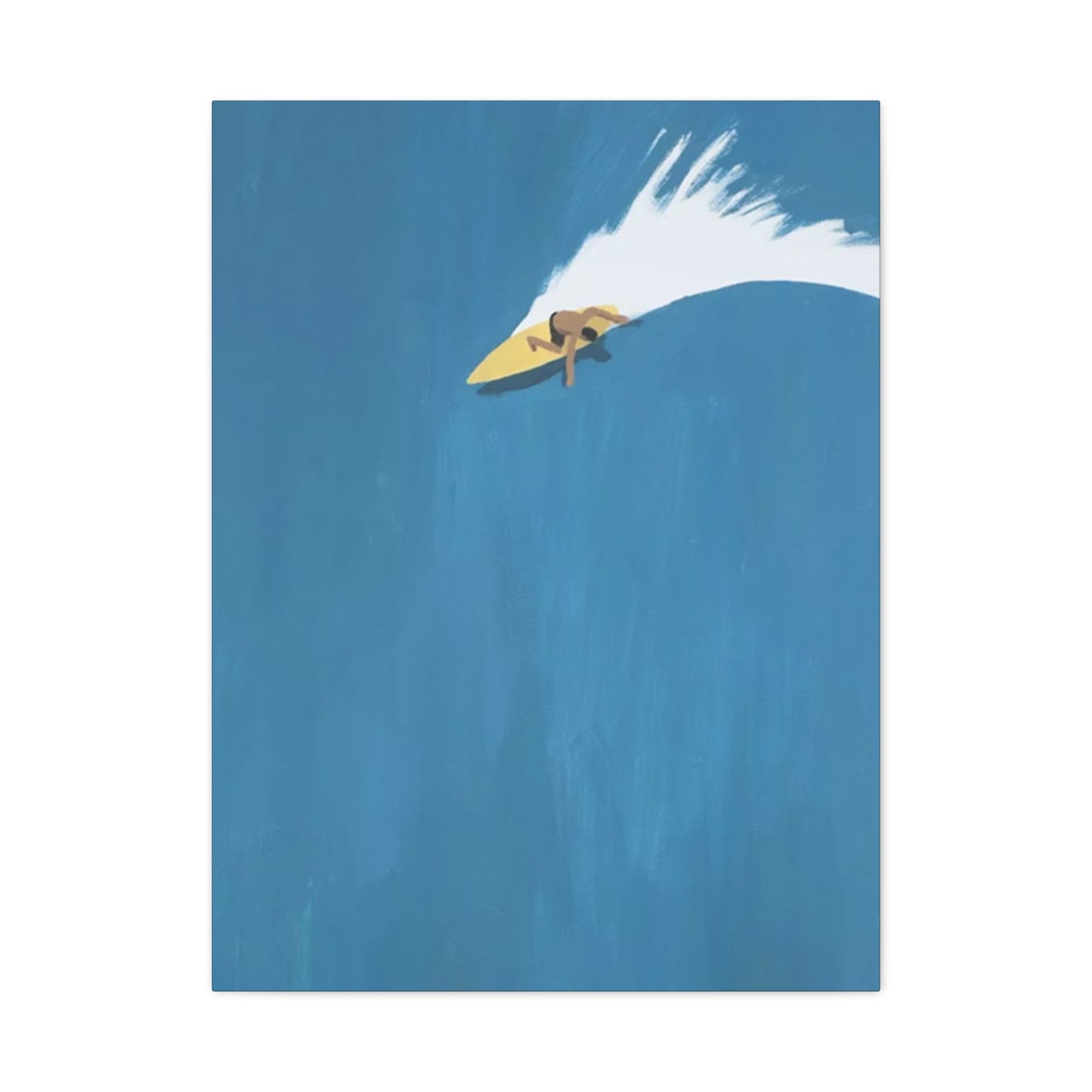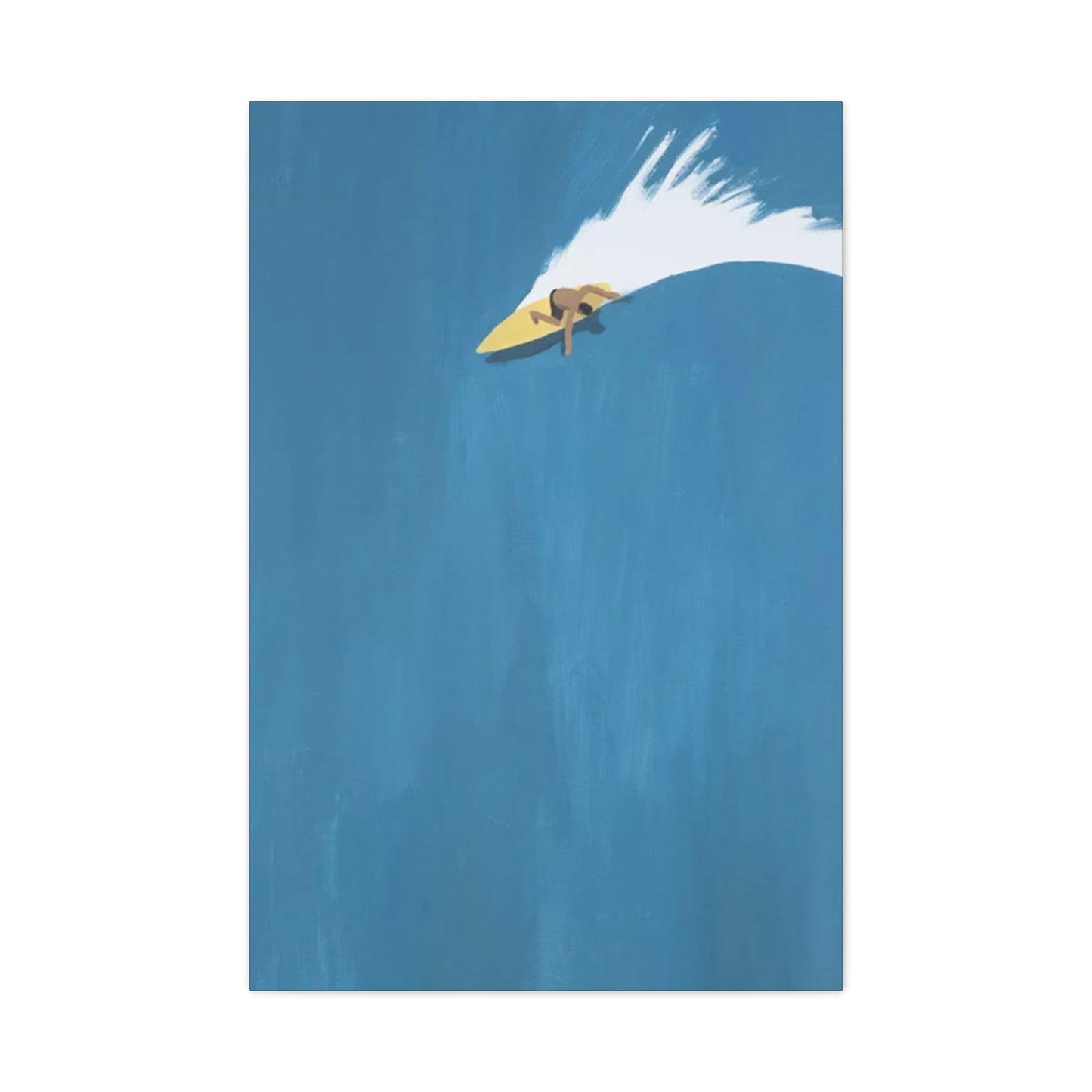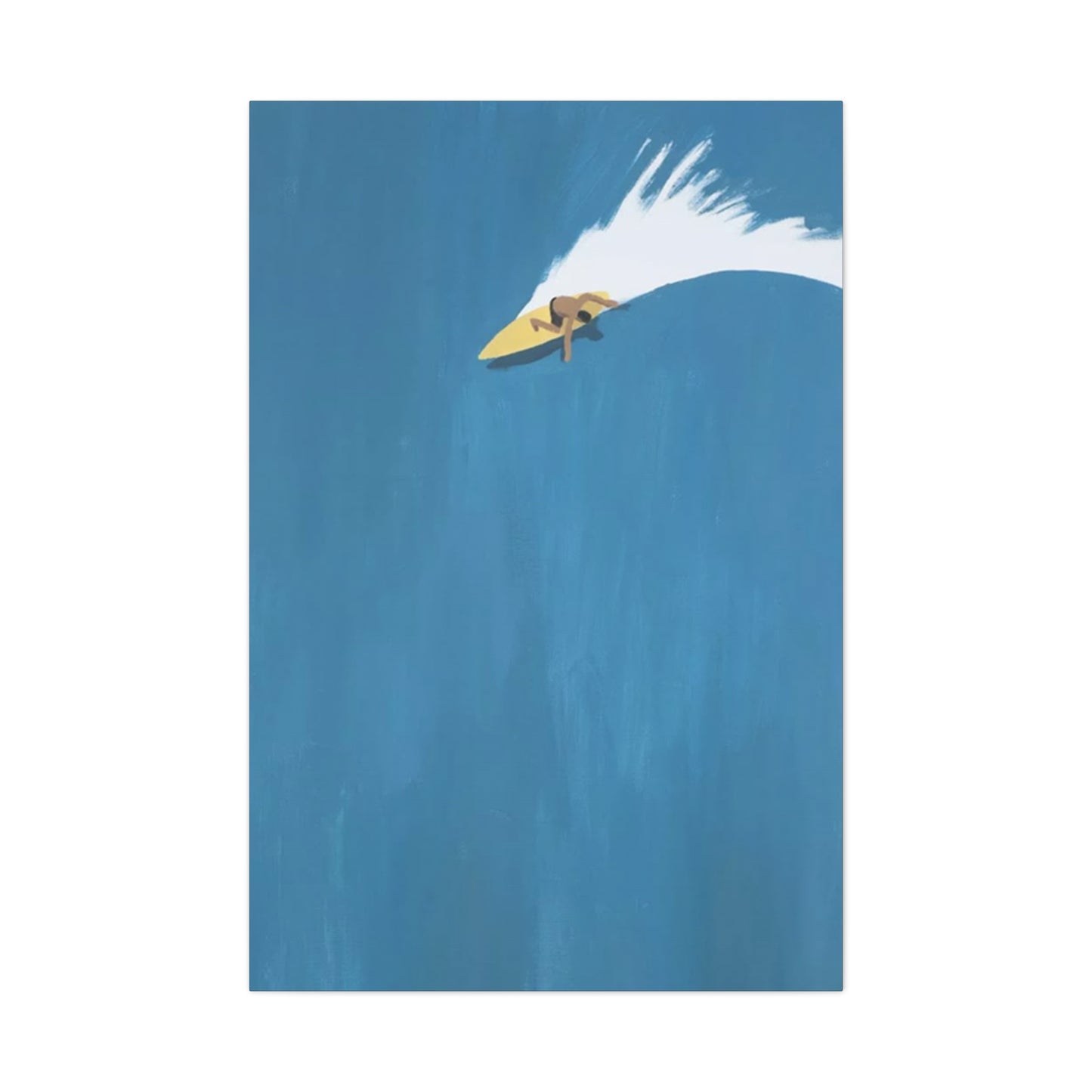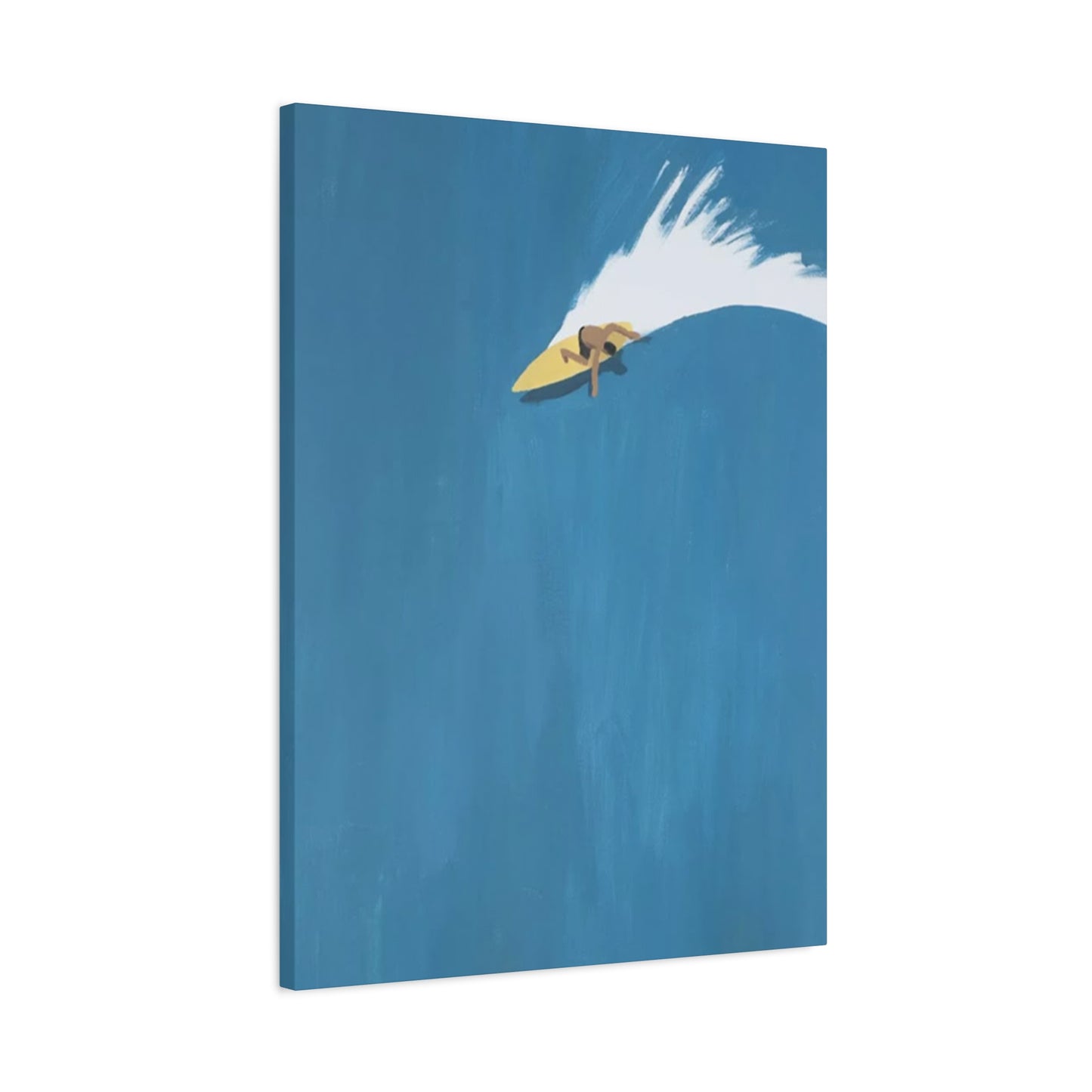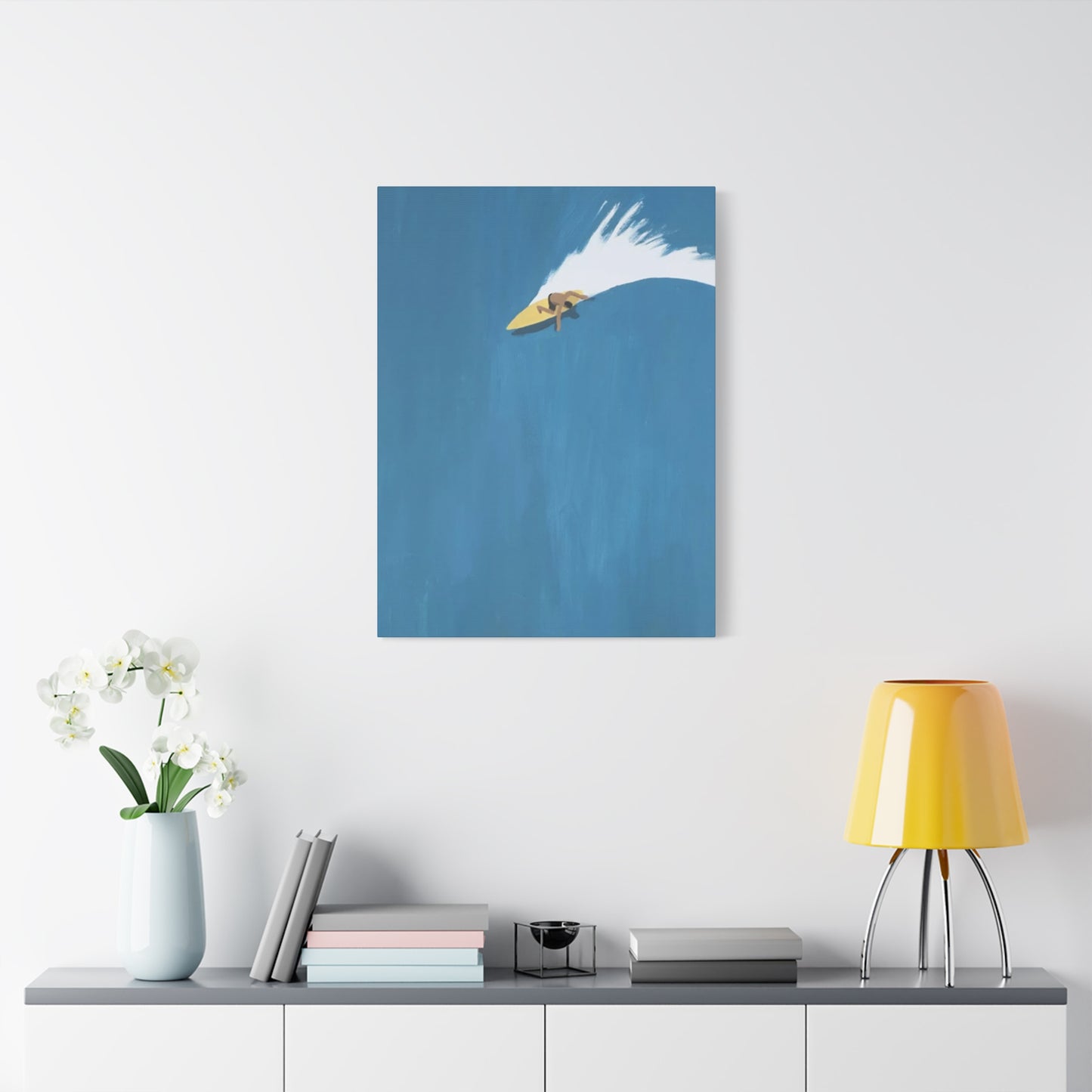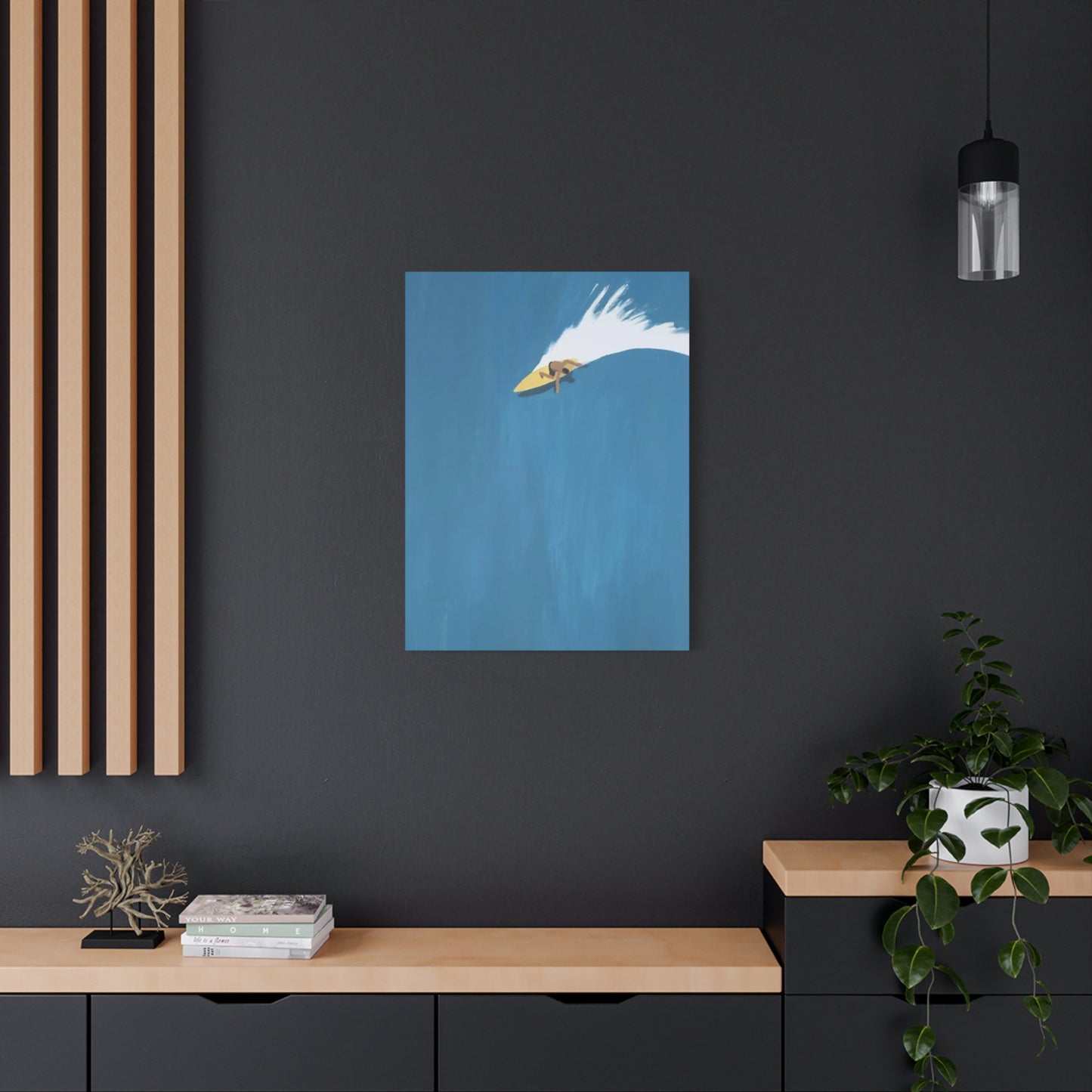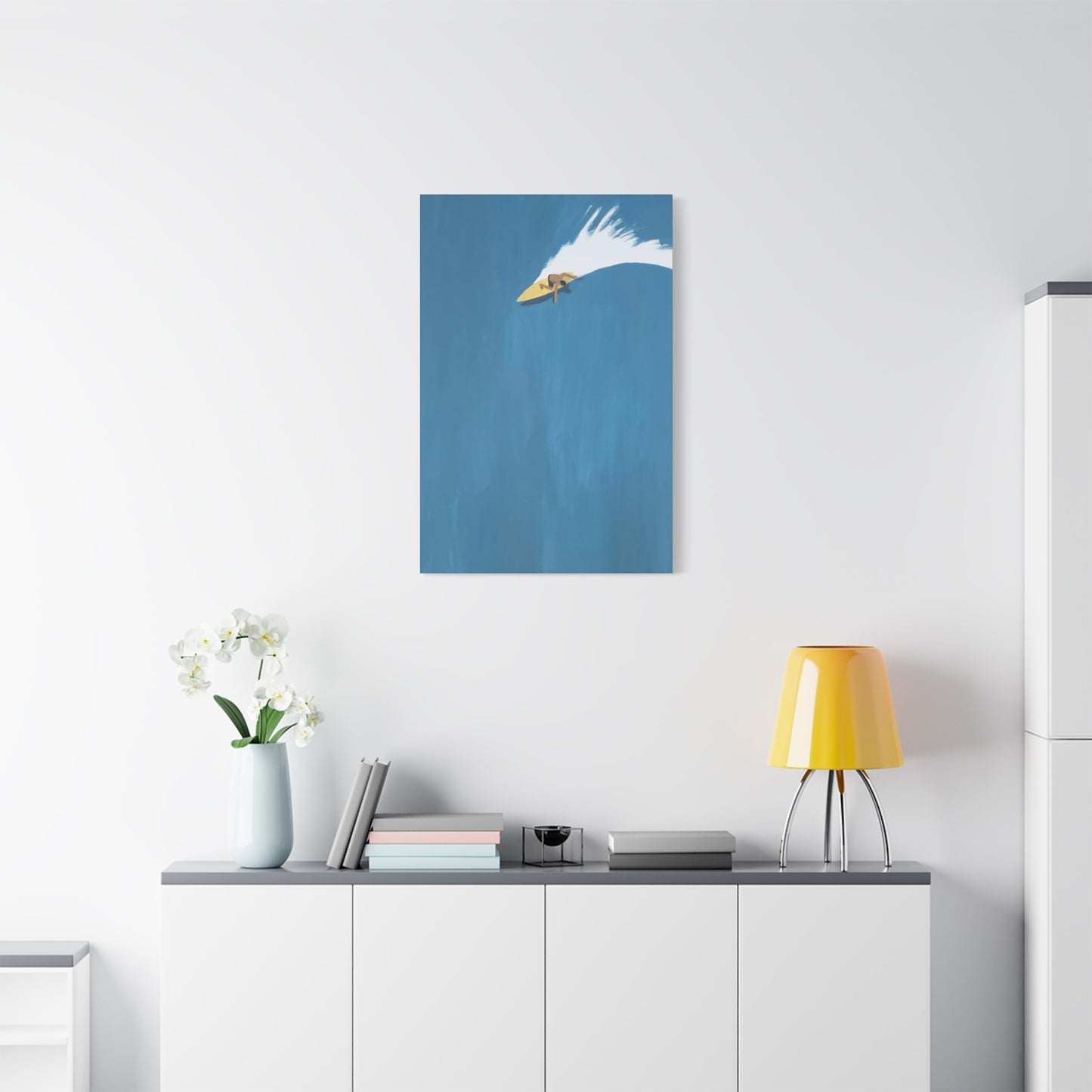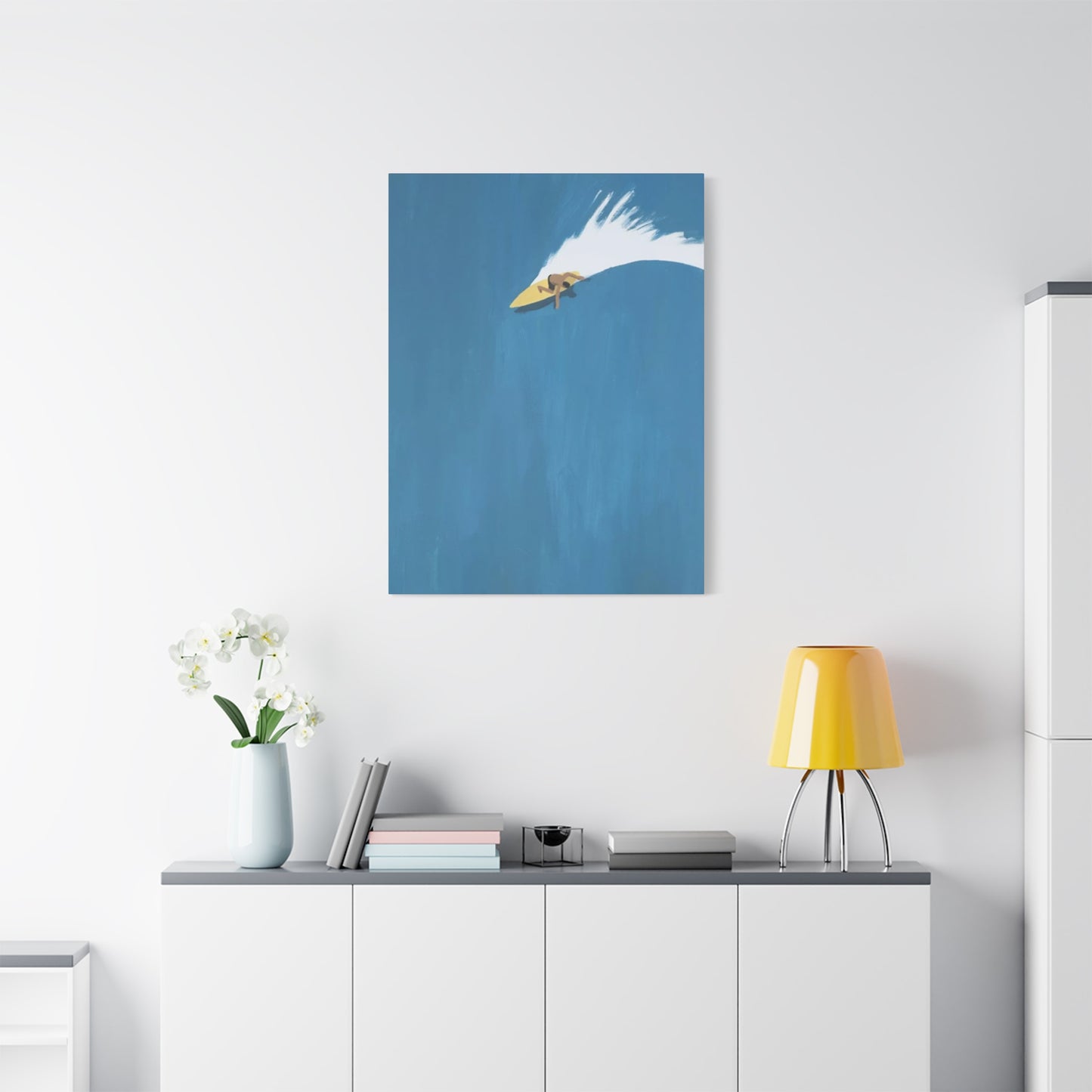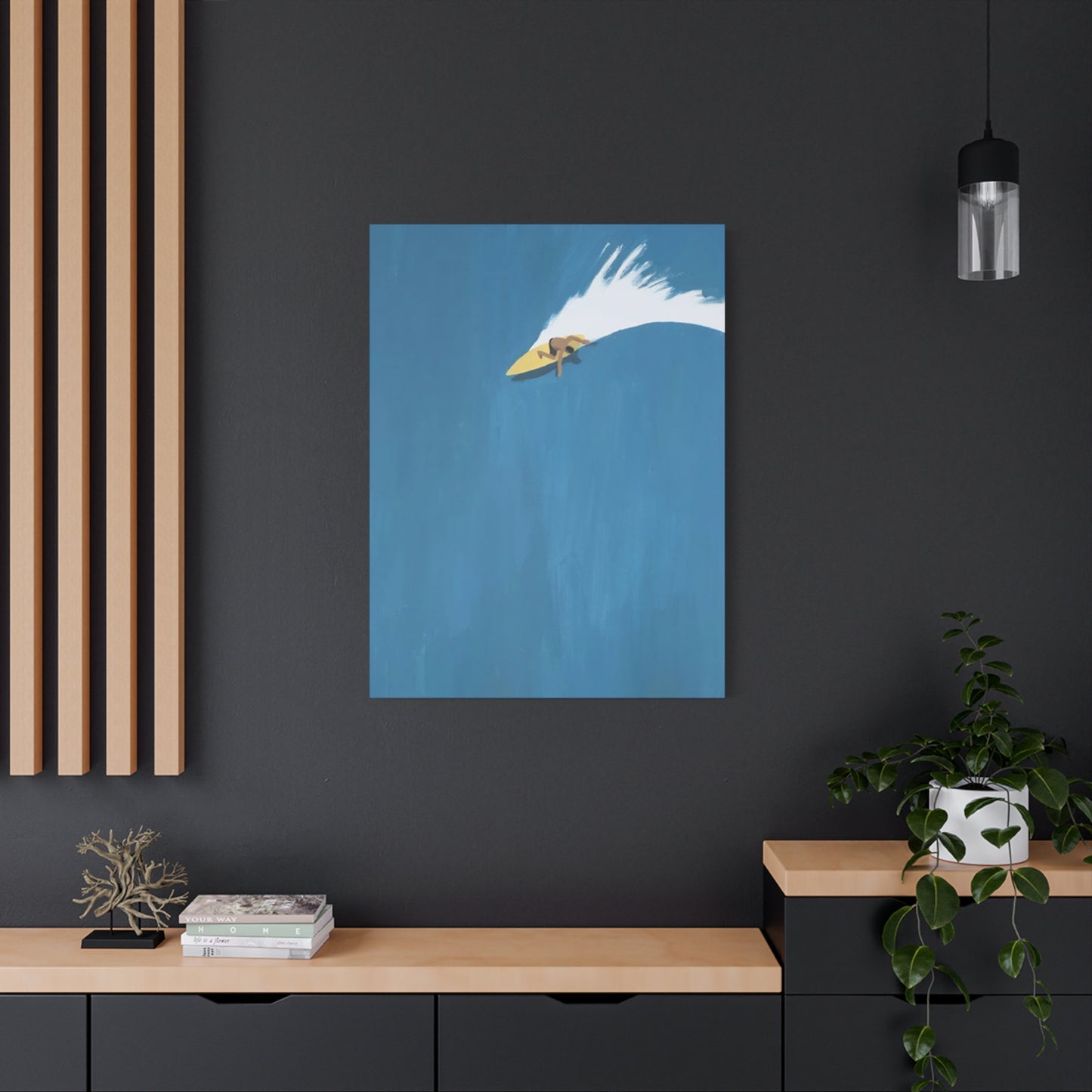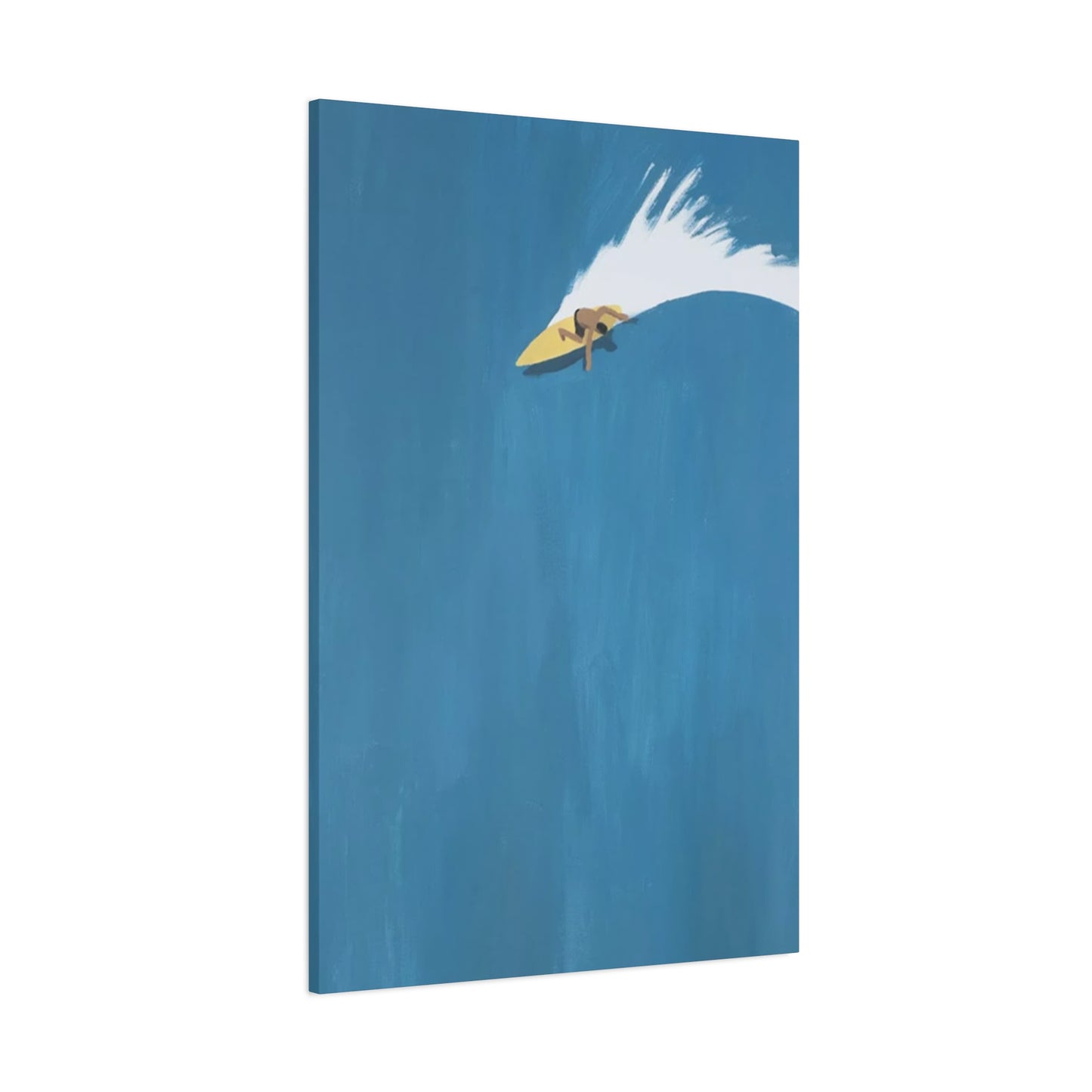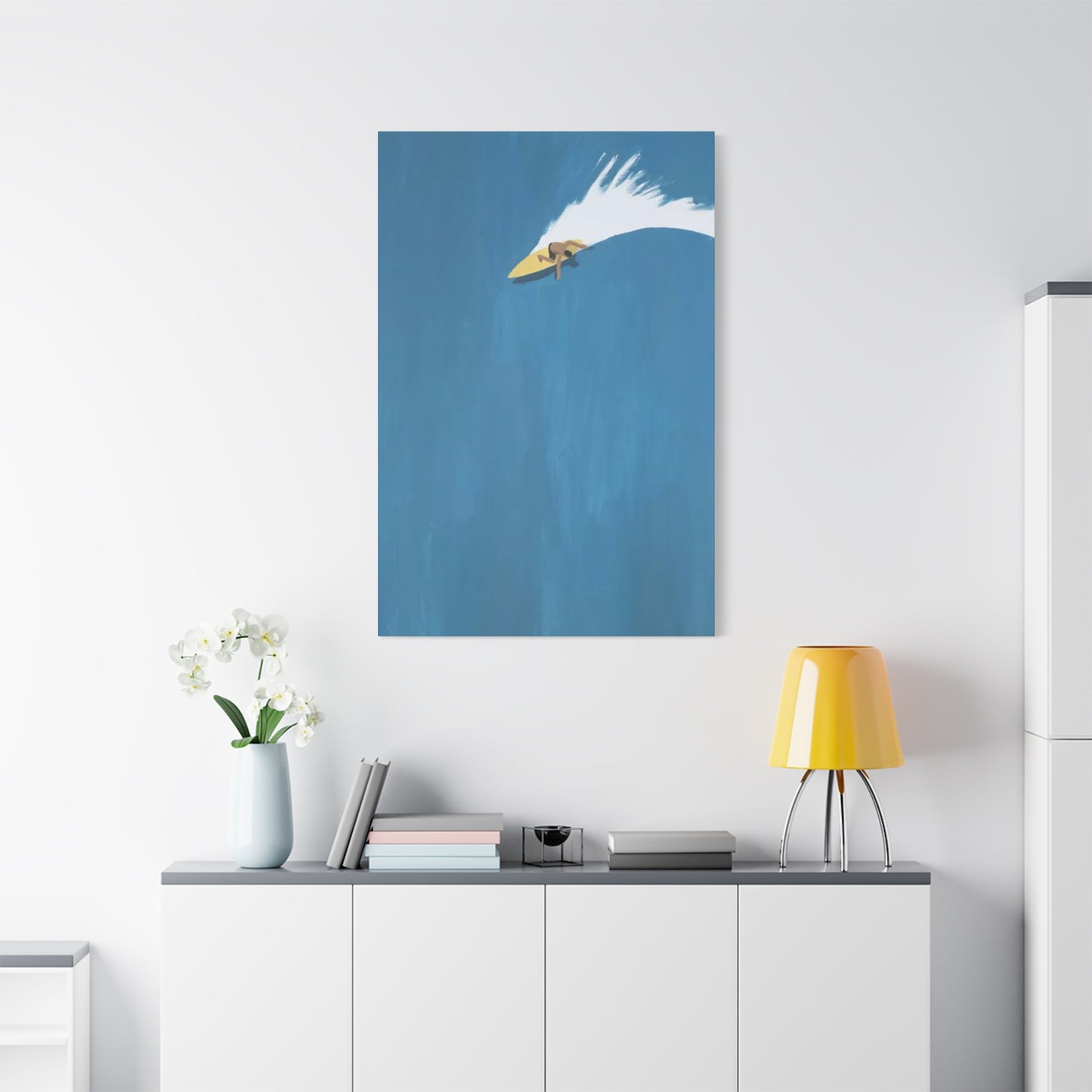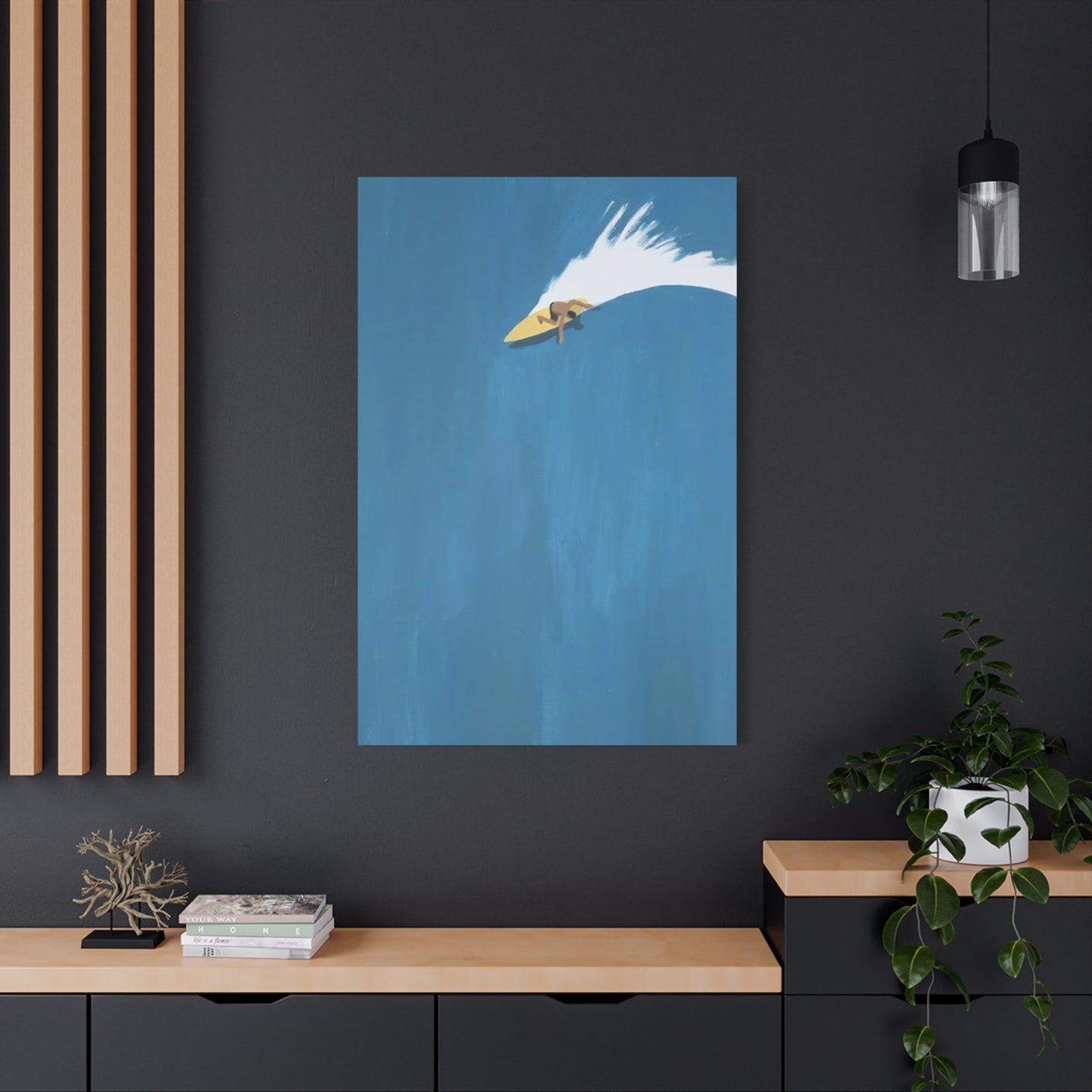Coastal Wave Imagery: Canvas Art Prints for Ocean Enthusiasts and Beach Living Spaces
The allure of ocean waves crashing against shorelines has captivated humanity for centuries, and today, this timeless fascination finds expression through stunning canvas prints that bring the spirit of surfing and coastal living into homes worldwide. These artistic representations of wave riders, turquoise waters, and sun-kissed beaches offer more than mere decoration; they serve as windows to adventure, freedom, and the raw power of nature. Whether you're a dedicated wave rider, an ocean lover, or simply someone who appreciates the aesthetic beauty of coastal landscapes, surfing-themed canvas prints provide an exceptional way to infuse your living environment with the energy and tranquility of the sea.
The growing popularity of ocean-themed artwork reflects a broader cultural movement toward biophilic design, which emphasizes the human connection to natural elements. Canvas prints depicting surfing scenes capture moments of athletic grace, the interplay of light on water, and the endless horizon where sky meets ocean. These pieces resonate deeply with individuals who have experienced the thrill of riding waves or who dream of coastal escapes. The versatility of canvas as a medium ensures that these prints maintain their visual impact while remaining durable enough for long-term display in various environments, from modern apartments to beach houses.
Selecting the right canvas print for your space involves considering multiple factors, including color schemes, size proportions, and the emotional atmosphere you wish to create. Some prints showcase the adrenaline-pumping action of surfers navigating barrel waves, while others capture serene moments of paddling at dawn or the contemplative stillness of empty lineups at sunset. The artistic style can range from photorealistic imagery that documents actual surfing moments to abstract interpretations that distill the essence of wave motion into flowing colors and shapes. Understanding these variations helps buyers make informed decisions that align with their personal taste and interior design objectives.
The Cultural Significance of Wave Riding Imagery in Contemporary Art
Wave riding has evolved from an ancient Polynesian practice to a global phenomenon that influences fashion, music, lifestyle choices, and visual arts. The representation of surfing in canvas prints carries with it layers of cultural meaning that extend beyond the physical act of riding waves. These images embody concepts of freedom, environmental consciousness, adventure, and a connection to elemental forces that modern life often obscures. When displayed in homes or offices, surfing canvas prints serve as daily reminders of these values and aspirations.
The historical journey of surfing imagery in art began with early Hawaiian pictographs and evolved through the twentieth century as surfing spread to California, Australia, and eventually coastlines worldwide. Early surf photography focused on documenting the sport's pioneers and groundbreaking maneuvers, but as artistic appreciation grew, photographers and artists began exploring the aesthetic dimensions of wave riding. This shift transformed surfing imagery from simple documentation into expressive art that communicates mood, atmosphere, and philosophical perspectives on humanity's relationship with the ocean.
Contemporary canvas prints featuring surfing scenes draw from this rich visual heritage while incorporating modern photographic techniques and printing technologies. High-resolution cameras capture split-second moments of athletic performance, water droplets suspended in mid-air, and the translucent quality of breaking waves illuminated by sunlight. These technical capabilities allow artists to reveal details invisible to the naked eye, creating images that possess both documentary precision and artistic beauty. The translation of these photographs onto canvas adds texture and depth that enhances the viewing experience, making each piece feel more substantial than standard paper prints.
The symbolism embedded in surfing imagery resonates with diverse audiences for different reasons. For some viewers, these prints represent memories of beach vacations, childhood summers spent near the ocean, or aspirations for a more adventurous lifestyle. Others connect with the environmental themes implicit in surfing culture, which emphasizes ocean conservation and respect for natural ecosystems. The athletic dimension appeals to those who appreciate human skill and courage in confronting powerful natural forces. This multifaceted appeal explains why surfing canvas prints maintain popularity across age groups, geographic locations, and personal backgrounds.
Varieties of Ocean Wave Canvas Prints
The market for ocean-themed canvas prints offers remarkable diversity, accommodating various artistic styles, color palettes, and compositional approaches. Understanding these categories helps buyers identify pieces that will harmonize with their existing decor while expressing their individual connection to coastal culture. From dramatic action shots to minimalist abstractions, the range of available options ensures that every space can benefit from ocean-inspired artwork.
Action-oriented prints capture surfers in dynamic poses, often frozen at critical moments during wave riding. These images typically feature bold compositions with strong diagonal lines created by the wave face, the surfer's body position, and the spray patterns of water. The color palette in such prints often includes vibrant blues and turquoises contrasted with white foam and the warm tones of sunlit skin or surfboard surfaces. These energetic pieces work particularly well in spaces where you want to stimulate conversation, inspire activity, or create focal points that draw the eye across a room.
Contemplative ocean scenes offer a different aesthetic experience, presenting calmer waters, distant horizons, or solitary figures in peaceful communion with the sea. These prints might show longboard riders gliding across gentle swells, dawn patrol sessions with glassy conditions, or empty lineups awaiting the next set. The mood created by such imagery tends toward tranquility and reflection, making these pieces ideal for bedrooms, meditation spaces, or areas where you seek to foster relaxation. Color palettes in contemplative prints often feature softer tones, subtle gradations, and muted contrasts that promote visual harmony.
Abstract interpretations of wave motion and ocean energy represent another significant category within surfing canvas prints. These artistic expressions may use fluid painting techniques, digital manipulation, or experimental photography to capture the essence of wave dynamics without literal representation. Swirling blues and greens suggest water movement, while gestural marks evoke the spray and energy of breaking surf. Abstract ocean prints appeal to viewers seeking artwork that complements modern interior design aesthetics while maintaining thematic connections to coastal environments. These pieces offer interpretive flexibility, allowing each viewer to project personal meanings onto the visual elements.
Black and white photography brings timeless elegance to surfing imagery, stripping away color to emphasize form, texture, and tonal contrast. Monochromatic prints highlight the sculptural qualities of waves, the graphic silhouettes of surfers, and the play of light across water surfaces. This approach often creates a more serious, documentary feel that can add sophistication to professional spaces or contemporary home environments. Black and white prints also possess greater versatility in matching existing color schemes, as they complement rather than compete with surrounding hues.
Vintage-style surf prints evoke nostalgia for earlier eras of surfing culture, often incorporating retro color processing, grain patterns, or compositional styles reminiscent of mid-century photography. These pieces might feature classic longboard designs, woody station wagons, or architectural elements from historic beach communities. The aesthetic appeal of vintage surf prints lies in their ability to transport viewers to a perceived golden age of surfing, when beaches were less crowded and the lifestyle seemed simpler and more authentic. These prints work beautifully in spaces decorated with mid-century modern furniture, rustic elements, or eclectic collections of memorabilia.
Composite and panoramic prints arrange multiple images or create wide-format displays that tell visual stories about surfing experiences. A triptych might show the progression of a wave from formation through breaking to dissipation, while a panoramic format could capture an entire beach scene from cliff to water's edge. These multi-panel arrangements create dramatic visual impact in larger spaces and allow for creative placement options that can wrap around corners or span significant wall sections. The narrative quality of composite prints makes them particularly engaging for viewers who enjoy discovering details through extended observation.
Color Psychology and Wave Art
The colors present in surfing canvas prints exert powerful influences on the psychological atmosphere of spaces where they're displayed. Understanding color psychology principles helps buyers select artwork that will generate their desired emotional responses while complementing existing interior design elements. Ocean imagery naturally incorporates specific color families, but the intensity, saturation, and combination of hues can vary dramatically between different prints.
Blue dominates ocean photography for obvious reasons, but the range of blue tones available spans from deep navy and midnight blue to bright turquoise and pale sky blue. Each variation creates distinct psychological effects. Deep blues suggest depth, mystery, and the power of open ocean swells, while lighter turquoise and aqua tones evoke tropical destinations, crystal-clear waters, and vacation relaxation. Mid-tone blues balance these extremes, offering versatility that works in numerous decorative contexts. The cooling effect of blue makes it particularly valuable in spaces where you want to reduce perceived temperature or create calming environments.
Green appears in ocean imagery through several mechanisms: the translucent quality of backlit waves, the presence of algae or marine vegetation, and the color mixing that occurs when blue water reflects green landscapes. Sea foam green, jade, and emerald tones add freshness and vitality to surfing prints while maintaining coastal connections. Green's psychological associations with growth, renewal, and natural environments complement the outdoor themes inherent in surfing imagery. Spaces decorated with earth tones, natural wood, or botanical elements particularly benefit from ocean prints that incorporate green hues.
White plays crucial roles in surfing canvas prints, representing foam, spray, clouds, and the highlights where sunlight strikes water surfaces. The amount and distribution of white within a composition significantly affects its overall feel. Prints dominated by white space convey airiness, purity, and simplicity, aligning with minimalist design philosophies. High contrast between deep blues and bright whites creates drama and visual energy, while softer gradations produce gentler, more contemplative moods. The versatility of white makes it an important consideration when matching prints to walls and furnishings.
Warm tones enter surfing imagery through sunset and sunrise lighting, the golden hour glow that photographers prize, and the skin tones and surfboard colors of wave riders. Oranges, pinks, and yellows inject warmth into predominantly cool ocean scenes, creating balance and visual interest. Prints featuring warm lighting work exceptionally well in spaces with limited natural light or in rooms where you want to create cozy, inviting atmospheres. The combination of warm foreground elements against cool ocean backgrounds produces depth through atmospheric perspective, enhancing the three-dimensional quality of canvas prints.
Neutral tones including beiges, tans, and sand colors often appear in beach scenes, providing grounding elements that balance the intensity of water colors. These earth tones connect ocean imagery to land environments, reinforcing the beach lifestyle aesthetic. Prints incorporating substantial neutral areas offer flexibility in matching diverse interior color schemes, as neutral backgrounds allow furniture and accessories to provide color accents without competing with the artwork.
Color saturation levels dramatically impact the mood conveyed by surfing prints. Highly saturated, vibrant colors create energetic, youthful atmospheres appropriate for recreational spaces, home gyms, or children's rooms. Desaturated, muted palettes generate sophisticated, understated elegance suitable for professional environments, adult bedrooms, or spaces where you want art to provide interest without overwhelming. Understanding your saturation preferences helps narrow the vast selection of available prints to those most likely to satisfy your aesthetic requirements.
Considerations for Canvas Prints in Various Living Spaces
Selecting appropriate dimensions for surfing canvas prints requires careful consideration of wall space, viewing distance, and the visual relationship between artwork and surrounding furnishings. Improperly sized prints can disappear into large walls or overwhelm small spaces, while correctly proportioned pieces enhance architectural features and create satisfying visual balance. Professional interior designers use specific guidelines to determine ideal artwork sizing, principles that homeowners can apply when selecting ocean-themed canvas prints.
The fundamental rule for artwork sizing suggests that prints should occupy between sixty and seventy-five percent of the available wall space above furniture pieces. This proportion ensures that the artwork feels anchored to its supporting element while leaving sufficient breathing room around edges. For example, above a standard sofa measuring seven to eight feet in length, an ideal canvas print would span approximately four to six feet horizontally. This relationship creates visual harmony between furniture and art, preventing either element from dominating at the expense of the other.
Viewing distance significantly influences how large a print should be for optimal appreciation. Artwork intended for close viewing, such as pieces above desks or in narrow hallways, can feature more detail and complexity in smaller formats. Conversely, prints meant to be seen from across large rooms should prioritize bold compositions, strong contrast, and larger dimensions that remain impactful from a distance. As a general principle, viewers should be able to stand at a distance equal to one and a half to two times the artwork's diagonal measurement to appreciate it fully without strain.
Ceiling height affects the vertical dimension of canvas prints and influences placement decisions. In rooms with standard eight-foot ceilings, leaving too much space between furniture and artwork can create disconnect, while hanging pieces too high forces viewers into uncomfortable neck positions. The center of artwork should typically align with eye level, approximately fifty-seven to sixty inches from the floor, though this guideline adjusts when prints hang above substantial furniture. In rooms with higher ceilings, you gain flexibility to display larger vertical prints or to create gallery walls with multiple pieces stacked vertically.
Horizontal versus vertical orientation choices depend on both the subject matter and the space where prints will hang. Landscape-oriented horizontal prints naturally complement wide walls above sofas, beds, or console tables, while portrait-oriented vertical prints suit narrow walls beside doorways, in hallways, or in vertical spaces between windows. Surfing imagery lends itself to both orientations: horizontal compositions can capture panoramic beach scenes or the length of breaking waves, while vertical formats emphasize the height of steep wave faces or create dramatic impact with surfers positioned along ascending diagonals.
Multi-panel arrangements offer creative solutions for filling large wall areas while maintaining manageable individual piece sizes. Diptychs divide images across two canvases, triptychs across three, and larger polyptychs across four or more panels. These arrangements allow for interesting spacing variations, with panels displayed touching edge-to-edge, separated by consistent gaps, or arranged in staggered configurations. Multi-panel surfing prints work particularly well above sectional sofas, in dining rooms where they can span significant wall lengths, or in offices where they provide visual interest without the weight and expense of single massive canvases.
Small accent prints measuring twelve by sixteen inches or less serve specific decorative functions, working in groupings to create gallery walls, adding interest to shelving displays, or filling awkward spaces that can't accommodate larger pieces. These smaller formats allow collectors to display multiple surfing images representing different moods, locations, or styles. The affordability of smaller prints makes them accessible entry points for those beginning to incorporate coastal themes into their decor, with the option to expand collections over time.
Material Quality and Printing
The technical aspects of canvas print production significantly impact both initial visual quality and long-term durability. Understanding these factors helps buyers make informed decisions that balance immediate budget considerations against long-term satisfaction with their surfing artwork. Not all canvas prints are created equal, and the materials and processes used in production determine how well prints will maintain their appearance over years of display.
Canvas substrate quality varies considerably across price points and manufacturers. Premium cotton canvas offers superior archival properties, texture, and receptivity to inks compared to synthetic polyester or cotton-polyester blends. Pure cotton canvases feature natural fibers that create subtle texture variations, contributing to the handcrafted aesthetic that distinguishes canvas prints from paper or metal alternatives. The weight or thickness of canvas, measured in ounces per square yard, affects durability and the quality of wrapped edges around stretcher frames. Heavier canvases between ten and twelve ounces resist sagging and maintain taut surfaces better than lighter alternatives.
Ink technologies fundamentally determine color accuracy, vibrancy, and fade resistance. Pigment-based inks offer superior longevity compared to dye-based alternatives, with properly produced pigment prints maintaining color integrity for seventy-five to one hundred years when displayed in appropriate conditions. These archival inks resist degradation from ultraviolet light exposure, humidity fluctuations, and environmental pollutants. For surfing prints intended as long-term investments or heirloom pieces, pigment-based printing represents the gold standard. The color gamut or range of reproducible colors also varies between printing systems, with professional-grade printers producing more accurate blues and greens crucial for ocean imagery.
Coating applications protect canvas surfaces from moisture, dust, and handling damage while enhancing color depth and visual impact. Matte coatings preserve the natural canvas texture and reduce glare, making them ideal for brightly lit rooms or positions opposite windows. Satin finishes provide subtle sheen that enriches colors without producing harsh reflections. Gloss coatings maximize color saturation and contrast, creating dramatic impact but requiring careful placement to avoid problematic reflections. UV-protective coatings add another layer of fade resistance, particularly valuable for prints displayed in rooms with significant natural light exposure.
Stretcher frame construction influences how canvas prints maintain their shape and tension over time. Quality frames use kiln-dried wood that resists warping and cracking from humidity changes. Corner joint methods including finger joints, dovetails, or reinforced butt joints affect structural stability. Frame thickness typically ranges from three-quarters of an inch for standard profiles to two inches for gallery-wrap styles that create more substantial three-dimensional objects. The stretcher bar width matters particularly for gallery-wrapped prints where the image continues around edges, as wider profiles display more of the continued image.
Gallery wrapping techniques determine how images transition from front surfaces onto side edges. Mirror wrapping reflects edge portions of images back onto sides, creating continuity without losing central composition elements. Color extension wraps continue images around edges, which works beautifully for photographs without critical elements near borders. Solid color wraps in black, white, or custom hues provide clean finished appearances when images shouldn't continue around sides. Museum wrapping attaches canvas to the back of frames, leaving front edges crisp but requiring separate framing.
Hanging hardware quality affects both installation ease and long-term security. Wire hangers provide flexibility in leveling but can fail if weight exceeds wire strength ratings. D-ring hangers offer sturdy alternatives that distribute weight effectively when properly installed. Sawtooth hangers work for smaller, lighter prints but lack adjustability. French cleat systems provide the most secure hanging method for large or heavy canvases, distributing weight across entire top edges while allowing easy removal for cleaning or relocation.
Placement Strategies That Maximize Visual
Strategic placement of ocean-themed artwork can transform ordinary rooms into inspiring spaces that reflect personal passions and create specific atmospheric qualities. Beyond simply hanging prints on available wall space, thoughtful positioning considers lighting conditions, furniture relationships, architectural features, and the experiential flow through living environments. These considerations help surfing canvas prints achieve their full potential as focal points and mood enhancers.
Living rooms typically offer the most prominent display opportunities for surfing prints, with the wall behind seating areas serving as natural focal points. Positioning artwork at appropriate heights ensures comfortable viewing from seated positions while maintaining visual connections between prints and supporting furniture. In open-concept spaces, surfing prints can define zones within larger areas, marking the living room boundary or creating visual stops that guide attention through spaces. The scale and subject matter of prints should match the formality level of living areas, with dramatic action shots energizing casual family rooms while contemplative ocean scenes complement more refined sitting rooms.
Bedroom placement of wave imagery requires sensitivity to the mood you want to create in sleeping spaces. Calm, horizontal ocean scenes featuring gentle colors promote relaxation and rest, making them suitable choices for walls opposite beds where they'll be viewed before sleep. More energetic surfing action might be better positioned on walls behind beds or in dressing areas where stimulating imagery aligns with morning routines. The personal nature of bedrooms allows for more experimental or meaningful print selections that reflect individual surfing experiences, aspirations, or memories.
Home offices and work spaces benefit from inspirational surfing imagery that provides mental breaks from concentrated tasks. Positioning ocean prints where they're visible during brief pauses encourages momentary relaxation while reinforcing connections to valued activities outside work. The motivational aspect of surfing imagery, representing goal achievement and perseverance, can support productivity when placed within view of desk positions. Size considerations in offices often favor smaller to medium prints that provide interest without overwhelming functional work environments.
Bathroom and powder room walls present unique opportunities for coastal themes, as the water-related activities in these spaces create natural thematic connections to ocean imagery. The typically smaller wall areas in bathrooms suit smaller print formats or vertical orientations. Humidity considerations require particular attention to canvas quality and protective coatings in bathroom installations, with well-sealed, moisture-resistant prints performing better in these challenging environments. Beach house bathrooms particularly embrace comprehensive surfing themes, potentially displaying collections of smaller prints that create gallery wall effects.
Hallways and transitional spaces often feature narrow walls that can accommodate vertical surfing prints or series of smaller pieces arranged in linear progressions. These passages offer opportunities to display collections that tell visual stories, perhaps following a surfer through various stages of a ride or showing different surf breaks around the world. The transient nature of hallway viewing favors prints with strong graphic impact that register quickly rather than complex compositions requiring extended study.
Dining areas can successfully incorporate surfing prints that stimulate conversation and create relaxed atmospheres conducive to gathering and sharing meals. The social function of dining spaces aligns well with surfing culture's communal aspects and storytelling traditions. Print selections for dining areas might emphasize group surfing scenes, beach gatherings, or iconic surf locations that guests might recognize and discuss. Size and placement should avoid overwhelming dining tables while filling walls sufficiently to feel intentional rather than afterthought.
Staircases provide dramatic vertical display opportunities where larger prints or series of coordinated pieces can create impressive visual journeys accompanying physical movement through homes. The changing viewing angles as one ascends or descends stairs add dynamic qualities to artwork display, revealing different details or creating interesting perspective shifts. The often-underutilized walls alongside stairs benefit from surf imagery that might be too large or dramatic for other locations.
Complementary Design Elements That Enhance Coastal Print Displays
Surfing canvas prints achieve their greatest impact when thoughtfully integrated into broader interior design schemes that reinforce coastal themes without becoming overwhelming or clichéd. Supporting design elements including furniture selections, color palettes, textures, and accessories create cohesive environments where ocean artwork feels natural and purposeful. Understanding these complementary relationships helps homeowners develop authentic coastal aesthetics that reflect genuine connections to surfing culture rather than generic beach house stereotypes.
Color palette development should begin with extracting hues from the surfing prints themselves, using artwork as inspiration for wall colors, upholstery, and accent pieces. This approach creates natural harmony between prints and surroundings while allowing artwork to anchor color schemes. For prints dominated by cool blues and teals, surrounding spaces might incorporate complementary warm tones in wood finishes, throw pillows, or area rugs, creating balance that prevents rooms from feeling cold. Prints featuring sunset or sunrise warming effects pair beautifully with neutral backgrounds that allow the artwork's colors to command attention.
Furniture materials and styles that complement surfing prints typically emphasize natural materials and relaxed forms over formal traditional pieces. Light-toned woods including bleached oak, pine, or reclaimed teak reinforce beach house aesthetics without overwhelming spaces. Upholstered pieces in natural fiber fabrics like linen, cotton, or jute maintain casual comfort appropriate to coastal themes. Modern or contemporary furniture styles with clean lines provide sophisticated backdrops that prevent ocean themes from becoming too literal or kitschy. The key lies in suggesting coastal living through material choices and relaxed arrangements rather than explicitly nautical decoration.
Texture layering adds depth and interest to rooms featuring surfing prints, preventing spaces from appearing flat or one-dimensional. Woven textures in area rugs, baskets, or wall hangings introduce organic elements that relate to natural environments. Smooth surfaces in glass, metal, or polished stone provide contrast while reflecting light in ways that enhance overall spatial quality. Canvas prints themselves contribute textural interest through their woven surfaces, particularly when displayed without glass covering. Combining multiple texture types creates rich sensory environments that reward extended occupancy and repeated viewing.
Lighting design dramatically affects how surfing canvas prints appear and how they influence room atmospheres. Natural light exposure requires careful consideration, as direct sunlight can damage prints over time despite UV-protective coatings. Positioning prints on walls perpendicular to windows allows natural light to illuminate artwork without direct exposure. Artificial lighting options include picture lights that mount above or below frames, track lighting that highlights multiple pieces, or accent lamps positioned to cast attractive shadows and highlights across canvas textures. Warm white LED bulbs typically render ocean colors most naturally, avoiding the color casts that can occur with some cool white or daylight-balanced sources.
Accessory selections should support coastal themes established by surfing prints without redundant literal references. Rather than filling spaces with anchors, ship wheels, and seashells, consider more sophisticated coastal nods like driftwood sculptures, sea glass collections, or vintage surfboards displayed as art objects. Textiles including throw blankets, pillows, and window treatments might incorporate subtle wave patterns, organic textures, or colors extracted from canvas prints. The goal is creating environments where surfing prints feel perfectly at home rather than standing as isolated decorative gestures.
Plant selections bring living elements into spaces featuring ocean artwork, connecting indoor environments to natural coastal landscapes. Species that thrive in bright light and tolerate occasional neglect suit beach house aesthetics while adding vertical interest and air-purifying benefits. Large-leafed tropical plants like monstera or bird of paradise create bold statements that complement energetic surfing prints, while succulents and air plants offer low-maintenance options that suit minimalist approaches. Organic planter materials including wood, ceramic, or woven baskets maintain design coherence.
Architectural features including exposed beams, shiplap walls, or board-and-batten paneling reinforce coastal aesthetics on larger scales, creating backdrops where surfing prints appear intentional rather than arbitrary. These structural elements work particularly well in beach houses or coastal properties but can also enhance inland homes where owners want to express their ocean connections. The key is maintaining authenticity and avoiding theme park approaches that sacrifice livability for rigid adherence to decorative concepts.
Surfing Aesthetics Reflected in Canvas Print Collections
Different coastal regions around the world have developed distinct surfing cultures that manifest in unique visual aesthetics reflected in canvas print offerings. Understanding these regional variations helps buyers select prints that resonate with their personal surfing experiences, dream destinations, or cultural affinities. From the tropical paradises of Polynesia to the rugged coastlines of Northern Europe, each surf region presents characteristic landscapes, wave types, and cultural elements that artists capture in their work.
Hawaiian surfing imagery draws from the birthplace of modern wave riding, where ancient traditions meet contemporary high-performance surfing. Prints featuring Hawaiian locations often showcase powerful reef breaks, crystal-clear turquoise water, volcanic rock formations, and lush tropical vegetation framing surf spots. The color palette tends toward vibrant blues, emerald greens, and the warm golden light characteristic of Pacific sunsets. Cultural elements including traditional longboard shapes, Hawaiian cultural symbols, and the aloha spirit permeate Hawaiian surf prints, connecting contemporary practice to ancient roots. These prints appeal to those who view surfing as spiritual practice and who appreciate the cultural depth Hawaiian traditions bring to wave riding.
California surf aesthetics emerged through the mid-twentieth century as surfing spread from Hawaii to mainland United States, developing distinctive West Coast character. Southern California prints often feature beach culture elements including piers, boardwalks, palm trees, and the golden sunlight that defines the region's visual identity. Northern California surf imagery tends toward more dramatic, rugged coastlines with redwood-lined bluffs, colder water colors, and moody atmospheric conditions. The laid-back yet innovative spirit of California surf culture translates into prints that balance accessibility with aspirational lifestyle qualities. Vintage California surf prints particularly resonate with collectors appreciating mid-century design and nostalgia for surfing's golden age.
Australian surfing imagery reflects the continent's coastline diversity, from tropical Queensland reefs to the powerful point breaks of Victoria and the remote perfection of Western Australia. Australian surf prints often feature distinctive golden or reddish cliffs, unique vegetation, and the intense sunlight characteristic of southern hemisphere locations. The bold, adventurous spirit of Australian surf culture manifests in images of large, powerful waves and the athletic, progressive approaches Australian surfers have pioneered. Color palettes may include warmer earth tones alongside ocean blues, reflecting the sun-baked landscape adjacent to surf breaks.
Indonesian tropical paradise imagery has become iconic in surf culture since the discovery of world-class waves throughout the archipelago. Prints featuring Balinese or Mentawai locations showcase perfect barrel waves, overhanging jungle vegetation, traditional boats, and the distinctive architecture of island cultures. The exotic appeal of Indonesian surf imagery attracts those dreaming of remote surf adventures and connections to simpler, more integrated relationships between traditional cultures and ocean environments. These prints often emphasize the crystalline quality of tropical water and the perfection of reef breaks that appear almost too ideal to be real.
Central and South American surf regions including Costa Rica, Nicaragua, Mexico, and various Pacific coast locations offer imagery combining tropical warmth with Latin cultural elements. These prints may feature colorful buildings, fishing boats, volcanic backdrops, and the warm community atmosphere characteristic of surf towns throughout the Americas. The accessibility and adventure associated with surf travel to these regions translates into prints that feel simultaneously exotic and approachable, perfect for those who view surfing as gateway to cultural exploration.
European Atlantic coast imagery presents dramatically different aesthetics from tropical surf regions, featuring rugged cliffs, moody skies, colder color palettes, and the challenging conditions that have shaped European surf culture. Prints from Portugal, France, Ireland, and other Atlantic locations often emphasize raw power, natural beauty unsoftened by tropical warmth, and the dedication required to surf in less forgiving conditions. These images appeal to those who appreciate surfing's serious athletic dimensions and who connect with wilder, less domesticated natural environments.
Align With Personal Surfing Experiences
The most meaningful surfing canvas prints often connect to personal experiences, memories, or aspirations related to wave riding. Rather than simply choosing images that look attractive, buyers can deepen their satisfaction by selecting prints that reflect their individual relationships with surfing culture. This personalized approach transforms decorative artwork into visual autobiographies that sustain emotional connections and stimulate positive memories.
Commemorating specific surf sessions or locations through canvas prints creates tangible reminders of significant experiences. A photograph of a surf break where you learned to ride waves, achieved a personal milestone, or spent memorable time with friends or family carries emotional resonance no generic beach scene can match. Some photographers and services offer custom canvas printing from personal photographs, allowing you to display your own surfing moments as professional-quality artwork. These personalized prints become conversation starters and focal points for sharing stories about your surfing journey.
Aspirational imagery representing surf destinations you hope to visit or skills you're working to develop serves motivational functions beyond aesthetic appeal. A canvas print depicting the perfect Indonesian barrel wave you dream of riding someday keeps that goal visually present in your daily environment, reinforcing commitment and maintaining focus. Similarly, images of advanced maneuvers or challenging conditions you're building toward can inspire practice and dedication. This approach transforms artwork into visual goal-setting tools that support personal growth within surfing.
Style preferences in surfing often translate into canvas print selections that mirror your approach to wave riding. Traditional longboarders might gravitate toward images of cross-stepping, nose-riding, or classic longboard shapes that celebrate the flowing, soulful aspects of surfing they value. Progressive shortboarders might prefer dynamic action shots showcasing aerial maneuvers, powerful carves, or cutting-edge board designs. This alignment between artwork and personal practice creates authenticity in decorative choices that external observers often sense even if they can't articulate.
Family surfing traditions and multigenerational connections to ocean culture find expression through canvas prints that honor these lineages. Vintage images from eras when parents or grandparents surfed, historical photographs of family members riding waves, or contemporary prints depicting family surf sessions all celebrate surfing as shared experience rather than individual pursuit. These family-focused prints work particularly well in common spaces where multiple generations gather, visually reinforcing the values and traditions that unite family members across ages.
Environmental consciousness and ocean conservation concerns that many surfers share can guide print selections toward artwork that emphasizes natural beauty, pristine conditions, or the majesty of marine environments worthy of protection. Some surf photographers explicitly link their work to conservation causes, creating images that celebrate ocean ecosystems while raising awareness about threats these systems face. Displaying such prints demonstrates alignment with environmental values while supporting artists who contribute portions of proceeds to conservation organizations.
Regional identity and local pride in home surf breaks motivate many surfers to display prints featuring their local coastlines and familiar waves. These locally focused prints root interior spaces in specific geographic identities, particularly meaningful for those who've relocated from coastal areas to inland locations or who want to maintain connections to home regions while living elsewhere. Supporting local surf photographers and artists adds community dimension to these purchases, circulating resources within surf communities while celebrating places that shape surfer identities.
Canvas Print Display in Commercial and Professional
Surfing canvas prints extend beyond residential applications into commercial environments where coastal themes support brand identities, create desired customer experiences, or reflect organizational values. Understanding how businesses and professionals utilize ocean-themed artwork reveals additional dimensions of these prints' versatility and cultural significance. From surf shops to corporate offices, canvas prints depicting wave riding serve various strategic functions while maintaining aesthetic appeal.
Surf shops and beach retail establishments naturally incorporate surfing canvas prints to reinforce brand identities and create immersive shopping experiences that extend beyond product displays. These commercial spaces often feature large-format prints that dominate walls, creating gallery-like atmospheres that position surfing as lifestyle and art form rather than merely recreational activity. The artwork selections in surf shops tend toward brand-sponsored athlete imagery, iconic surf locations, and cutting-edge action photography that positions establishments as authentic voices within surf culture. Customers shopping in these environments form associations between brands and the aspirational qualities represented in the artwork.
Fitness facilities including gyms, yoga studios, and wellness centers incorporate surfing prints to evoke outdoor activity, athletic achievement, and the mind-body integration surfing exemplifies. The inspirational quality of surf imagery motivates clients while creating atmospheric qualities aligned with health and vitality. Studio spaces focusing on surf fitness or balance training particularly benefit from ocean artwork that visually reinforces the connection between indoor training and ocean application. The clean, powerful aesthetics of well-chosen surf prints complement the modern design typical of contemporary fitness facilities.
Hospitality venues including hotels, restaurants, and bars in coastal destinations or those targeting beach-lifestyle markets extensively utilize surfing canvas prints to establish place identity and atmospheric qualities. Beach hotels might display collections representing local surf breaks, creating visual orientation for guests while celebrating regional coastal character. Restaurants emphasizing fresh seafood and casual dining experiences often incorporate ocean imagery that reinforces menu themes and desired dining atmospheres. Bars in surf towns or those targeting younger demographics use surf prints to create energetic, adventurous environments that encourage social interaction and extended visits.
Professional offices for companies in outdoor recreation, travel, environmental sectors, or creative industries frequently feature surfing prints that communicate organizational values and workplace culture. These installations suggest innovation, environmental consciousness, work-life integration, and the creative thinking that surfing metaphorically represents. Tech companies particularly embrace surf imagery as part of California-inspired workplace design that positions organizations as young, dynamic, and connected to lifestyle values beyond pure profit motives. The presence of surf art in professional environments signals to employees and visitors that the organization values balance, adventure, and authentic living.
Healthcare facilities including dental offices, physical therapy clinics, and medical practices sometimes incorporate calming ocean imagery to reduce patient anxiety and create more pleasant treatment environments. The stress-reducing qualities of nature imagery are well-documented in environmental psychology research, with coastal scenes performing particularly well in clinical settings. Surfing prints featuring serene conditions, empty lineups, or contemplative perspectives work better in healthcare contexts than intense action photography, aligning with the calming objectives these selections aim to achieve.
Educational institutions from elementary schools to universities utilize surfing prints in various contexts, from physical education facilities to ocean science departments to recreational student spaces. These installations support educational missions while making institutional environments more visually engaging and less sterile. Marine biology programs might incorporate surf imagery alongside scientific educational materials, creating connections between recreational ocean use and scientific study. Student unions and residence halls use surf prints to create relaxed social spaces that reflect student lifestyle interests.
Real estate staging professionals increasingly incorporate surfing canvas prints when preparing coastal properties for sale, as this artwork helps potential buyers envision the lifestyle associated with beach living. Staging with ocean-themed art makes abstract concepts like coastal lifestyle concrete and emotionally resonant, potentially accelerating sales and supporting asking prices. The removable nature of canvas prints allows stagers to customize artwork selections for specific properties and target demographics, ensuring appropriate stylistic alignment.
Conclusion:
In conclusion, coastal wave imagery through canvas art prints is a perfect way to bring the beauty and energy of the ocean into your living space, especially for those who have a deep connection to the sea or coastal living. The dynamic motion of the waves, captured on canvas, serves as a powerful reminder of the ocean’s ever-changing nature, while also providing a sense of calm and serenity. For ocean enthusiasts, this type of art can evoke feelings of adventure, nostalgia, and an enduring love for the sea, making it an ideal addition to any beach-themed home or coastal-inspired décor.
Canvas art prints featuring coastal wave imagery are not only visually stunning but also versatile in their ability to complement a wide range of interior styles. From modern minimalist spaces to cozy beach cottages, the organic flow of the ocean's waves can create a sense of movement and energy in a room. The varying shades of blues, greens, and whites, often combined with the play of light and shadow, allow for a sense of depth and texture, bringing a piece of the ocean’s vastness into your home.
For those who live near the coast, or simply long to be by the sea, these canvas art prints serve as a visual escape—a reminder of the beauty and majesty of the ocean. The energy of the waves, the softness of the horizon, and the gentle crashing of water on the shore can all help create a calming atmosphere that connects you to nature, even when you're miles away from the beach.
Ultimately, coastal wave canvas prints are more than just decorative elements; they embody a lifestyle, a love for the ocean, and an appreciation for the natural world. They capture the essence of coastal living and bring it into the home, where it can inspire relaxation, creativity, and a sense of peace. Whether as a bold centerpiece or a subtle accent, these art prints can transform your space into a serene beach retreat that reflects the beauty of the ocean.

















